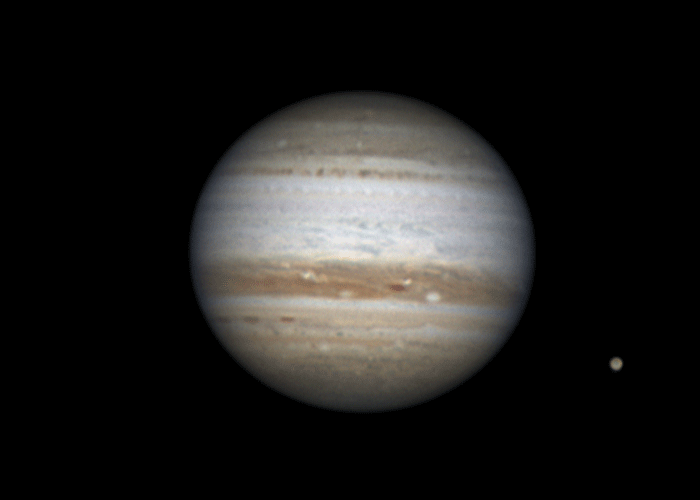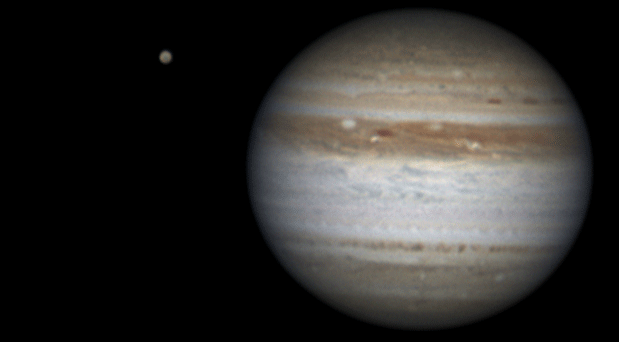Jupiter and Io
Io is hovering just in front of the GRS.
Basler Ace acA640-100gm
40 cm Dobson made by Rik ter Horst
Io is hovering just in front of the GRS.
And another image in Ir-R-G light (23:54UT combined using WinJupos, colors enhanced a bit):
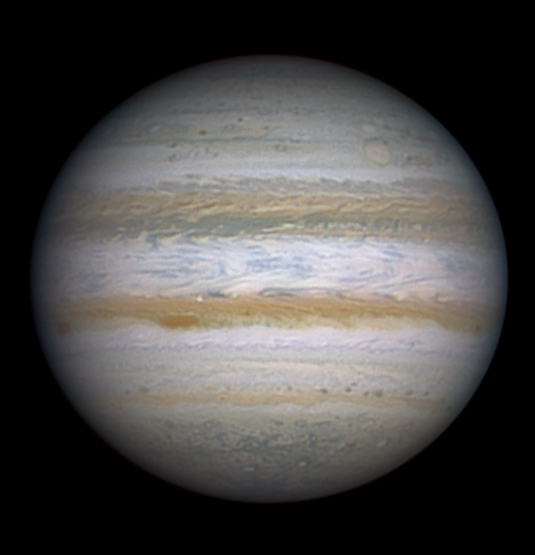
I recorded these images together with Rik ter Horst using his home made 40cm dobson telescope in the far North of the Netherlands. We were very lucky to have good seeing.
The transparancy was very poor though, making the processing a bit of a challenge.
And another image made half an hour later at 00:32UT on October 2:
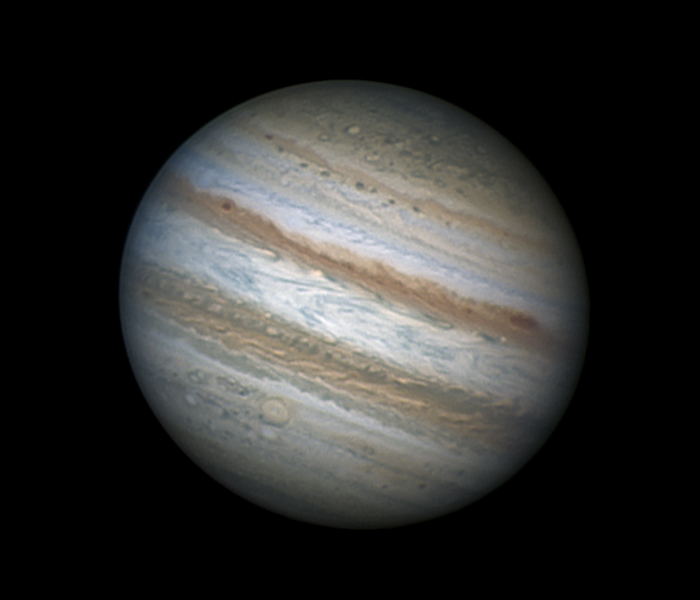
And finally a small animation showing Jupiter in red light (recorded at 23:47, 23:54 and 23:57):
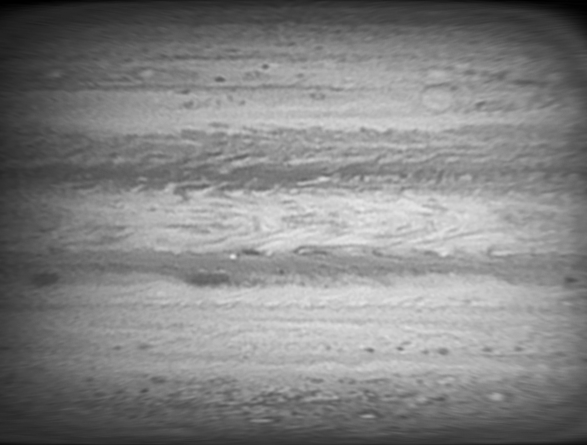
Seeing was excellent that night. There are plenty of recordings left to process, so perhaps I can make another animation.
Stacked in AutoStakkert!2, processed in WinJupos and Photoshop.
Seeing conditions were poor to average, but one good red channel taken at 80fps turned out pretty good and was used as a luminance image.
The 'little' moon Ganymede is a grayscale combination of several recordings containing mostly green data. The bright spot at the top is actually the Osiris crater and the darker spot at the bottom left is called the Galileo region (Ganymede appears almost flat on that side). When Ganymede is in front of Jupiter you can see this darker feature much easier, now it almost disappears in the dark background.
As usual the recordings were stacked using AutoStakkert!2, and processed in Photoshop.
Finally some good seeing!
Imaged under poor transparancy (between 30-70% of normal brightness) but fair (to poor) seeing conditions (imaged right before the seeing got really bad).
And this is the R-RGB version which shows some more details:
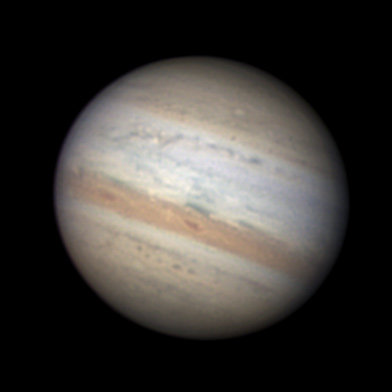
And an animation showing the outbreak region in infrared, red, green and blue light (you can see the image quality degrade from infrared to blue light. This is because of two reasons:
- the seeing got worse, and I imaged from Ir, R, G to B
- shorter wavelengths (blue light) are more affected by atmospheric distortions than the longer wavelengths (infared light). The bigger the telescope (and the worse the seeing, or the lower the object is in the sky), the more prominent this difference is. Theoretically the shorter wavelengths allow for more detail to be captured, but for my setup that only happens under really good seeing conditions and when the target is high in the sky (> 50 degrees). Jupiter only got to about 34 degrees altitude this year, but next year I expect better results especially for the green and blue channels when it will reach almost to 50 degrees.
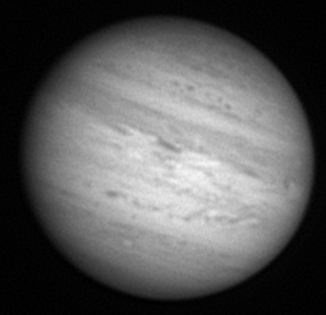
Showing the SEB outbreak.
Seeing: 6/10
And some Ir, R, G and B images
can be seen here
Seeing was decent for only a short period of time.
Jupiter and Io in a brief moment of decent seeing.
Re-processed on december 3.
First images with the new Basler Ace acA640 camera.
The recordings are RGB recordings, usually I use R-RGB for a little bit more detail, but I thought it would be nice to try something different this time. The animations consist of 15 RGB recordings, each of 45 channels stacked in AutoStakkert! and processed in Photoshop.
